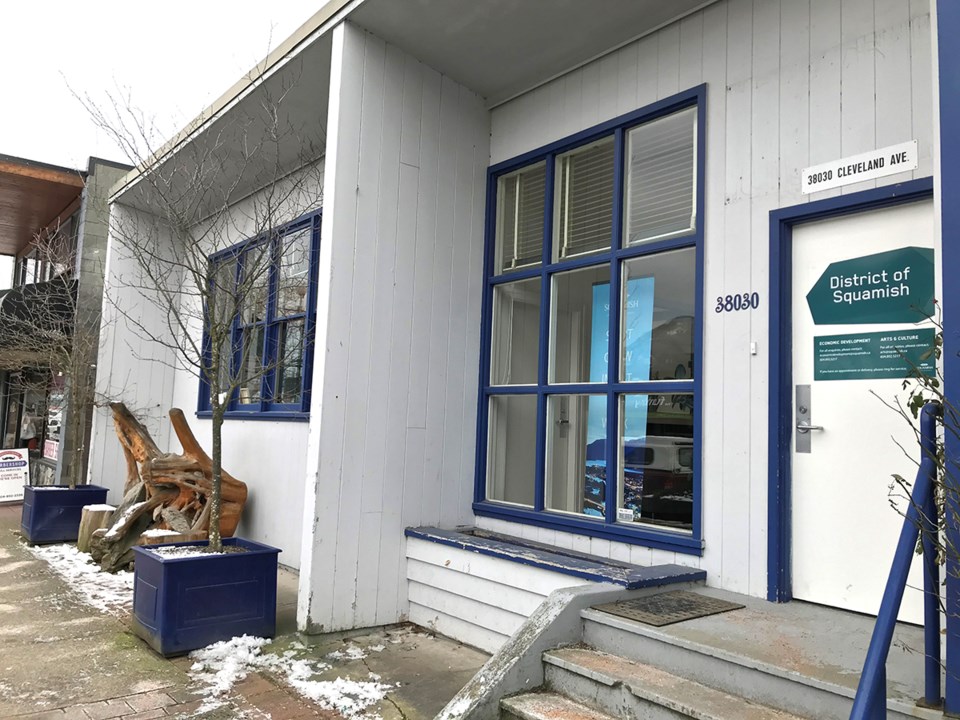Business, especially small business, is the engine that powers Squamish.
The Squamish business track — to continue the railway analogy — has seen its twists and turns from the boom and bust around the 2010 Olympics to job shortages to labour strife and recent employee shortages; to the current building boom coupled with a housing affordability crisis and employment space crunch.
And while industry once ruled here, tourism has forged its place as a powerful locomotive of its own.
The Chief checked in with local experts to get the lay of the land of what is ahead for local businesses as they move full steam ahead into 2020.
Patrick James, the Sea to Sky industry and community liaison with WorkBC, said local employers are currently cautiously optimistic about the economy and business prospects for this year.
"Though there have not been a high number of job postings in the first two weeks of 2020, local employers in construction, landscaping, food and retail services, hospitality and tourism have reported that they will need to hire new staff in the next few months,' he told The Chief by email.
Finding workers who have a place to live or transportation for the job remains an issue for some employers in town, however.
As does finding workers who are willing to work for wages offered, James said.
Our region's WorkBC is also hearing from employers about "replacing workers who have retired or will be retiring soon, so it seems "succession planning" is also a factor in the current labour market, irrespective of other economic considerations."
January so far has been busier than usual in terms of the number of job seekers heading to WorkBC, notably with clients seeking general labour and office administration positions, he added.
Squamish Chamber of Commerce
Louise Walker, executive director of the Squamish Chamber, told The Chief its members are generally confident in their business and optimistic for the future — more so than other businesses across the province.
In a recent survey, 88% of Squamish businesses were positive with prospects for their business over the coming three to five years, compared to 69% for B.C as a whole, she said in an email to The Chief.
Squamish's population sits at about 21,000, according to provincial stats, up from about 17,000 in 2011, and is projected to be at 30,000 in 2031, according to Squamish's Official Community Plan.
The growth has brought opportunities for both businesses dependant on regular consumers and those that sell to other businesses, according to Walker.
"It is encouraging to see the Squamish economy grow and diversify. From value-added wood manufacturing and tourism, to the emerging sectors of rec-tech and clean technology, a flourishing craft beverage sector, and a thriving business park, Squamish is poised for big things," she said.
The 2019 Squamish Chamber Collective Perspective Survey Report includes some comparisons between the rest of B.C. and Squamish. Far more Squamish businesses (84%) believed their business was well-positioned for a future, younger, millennial-influenced Canada than the rest of respondents in B.C. (68%).
Also of note, in the survey, 68% of Squamish businesses said that currently, their business is in either good or very good shape, compared to 63% in the rest of B.C.
About 88% said the prospects for their business over the coming three to five years was good or very good. That figure was 69% for B.C.
Of course, there are challenges for local business owners, too, Walker acknowledged.
Finding employees remains a challenge for chamber members, led by the shortage in affordable housing, Walker said.
In a recent survey, over two out of three Squamish Chamber members faced challenges recruiting or retaining staff in the last year.
Growing business is hindered by issues around permits, employment space, and various taxes — such as employer health tax and property tax bills, which are based on BC Assessments and reflect 'highest and best use,' not strictly the current use, she said.
"The Squamish Chamber works closely with the BC Chamber to develop and support policies that will help businesses grow, including a recommendation that the provincial government amend the BC Assessment Act to allow long-standing businesses to have their properties valued on current business use, not redevelopment potential," she said. [For chamber supported policies, go to squamishchamber.com.]

The District of Squamish
Local government in any community has a role to play in helping businesses thrive. Mayor Karen Elliott told The Chief the future looks bright for businesses in town.
"Together, with the business community and local partner organizations, we have a lot to be excited about in 2020. With all hands on deck — from business innovators and entrepreneurs to our partners, community agencies and senior levels of government, we're looking forward to a productive year ahead."
The District's economic development officer Kate Mulligan outlined several trends and challenges facing Squamish businesses this year.
Median wages in Squamish within some occupations are more competitive than those of Whistler, Mulligan noted.
Management wages in Squamish are 5.9% higher than Whistler, for example, while median wages for occupations in arts, culture, recreation and sport in Squamish are 7.6% higher than Whistler.
Median wages for manufacturing and utilities are 8.1% higher than in the Lower Mainland and 3.5% higher than Whistler.
Having enough space for businesses to operate is an ongoing challenge, she acknowledged.
Squamish has a current vacancy rate hovering at 0%, and this continues to be a challenge for new businesses and those wishing to expand in Squamish.
All types of employment space are facing this lack of supply, and lease rates are also rising in a highly competitive market, she told The Chief.
There was an increase in commercial and industrial building permits issued in 2018/19, which Mulligan said foreshadows that more business space is on the way. In 2018, 70 permits were issued, followed by 69 permits in 2019, while in 2017 there were 60 permits issued.
The average retail/office gross lease rate in Squamish in 2018 was $21.70 per square foot per year (base rate plus taxes, maintenance and insurance). That is 4% lower than in Abbotsford, however, where the cost is $22.67 per square foot.
Again, low rental housing vacancy rates and rising rents makes the list as a factor which creates challenges for businesses. This is also compounded by a lack of childcare spaces and qualified staff in Squamish, Mulligan noted.
On the plus side, Elliott touted the District's efforts to secure affordable rental units and purpose-built rental units within new Squamish developments, its work to implement Rental Zoning to protect existing rental stock, developing a Perpetual Affordable Housing policy and new governance model for developing and managing affordable housing. She noted purpose-built rental projects such as the Buckley Avenue project as examples of efforts to address the housing crunch.
"The District has been working to secure daycare space in new developments such as Jumar and at the Garibaldi Springs development, and has been vocal in its advocacy to support Capilano University's expansion of its Early Childhood Education offerings in Squamish, and to advocate for provincial investment," she said of work to combat the childcare crunch in town.

Elliott also pointed to New Spaces Childcare BC funding the District received for a new purpose-built child care facility at Valleycliffe Elementary School, to be operated long-term by Sea to Sky Community Services.
(For more on the District’s Childcare Action Plan, go to here.)
The District's economic development plans for 2020 include an inventory of district-wide employment land and space, which includes office, warehouse or retail space, as well as bare land, that is available for a business. This Employment Space Inventory and Forecasting Model will be available to the public through the District's Geographical Information System (GIS) mapping portal. This inventory will be used to model and assess future demand for employment land/space throughout Squamish so that the District can better anticipate future needs.
A soon-to-be-completed Priority Sector Action Plan will provide practical steps and tools for businesses in the green economy and adventure-based technology and design, Mulligan said.
The District, in partnership with Tourism Squamish, is also completing a Tourism Impact Study to measure the effect of tourism on Squamish's economy and to help plan for the future of tourism here.
The Downtown Squamish Business Improvement Association did not respond to The Chief's request for comment by press deadline.




